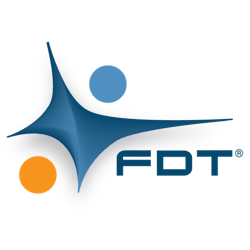Release of FDT 2.1 Sets Transformation Path for Connected Industrial Enterprise
Hannover, Germany, 24 April 2018 – FDT Group, an independent, international, not-for-profit standards association supporting FDT® technology, today announced the release of the FDT 2.1 specification, which enhances both industrial automation developer and end user experiences focused on security, performance, ease of use, and investment protection. The key technological embellishments in 2.1 set the stage for FDT’s transformation towards a complete, standardized Industrial Internet of Things (IIoT) architecture enabling sensor-to-cloud, enterprise-wide connectivity for next-generation automation solutions.
Industry-driven feedback has been the basis for the growth of FDT technology since the release of the original Version 1.2 specification in May 2001. The updated FDT 2.1 standard builds on the success of FDT 2.0, released in April 2012, with a robust combination of features, including improved security, faster performance, ease of use, and investment protection, according to Glenn Schulz, managing director, FDT Group.
“As we enter the era of IIoT, security is at the forefront of each specification revision as FDT is the heartbeat of automation architectures and serves a key integration technology to connect networks and assets,” said Schulz. “FDT 2.1 strengthens our security offerings, allowing validation of signatures for installed Device Type Managers™, known as DTMs™, and protecting against the possibility of malware in control systems. As systems become more connected, tightening authentication improves plant-wide security and provides worker safety.”
Attractive performance and ease of use capabilities are included in the FDT 2.1 revision, such as:
- Faster retrieval of static and process values from input/output (I/O) devices.
- Extended support for array data types, improving the organization of larger volumes of structured data and providing users with improved performance for reading more operational data from advanced devices.
- An environment to control how a DTM connects to a device, resulting in a significant enhancement for communications – especially OPC Unified Architecture (UA) Server monitoring performance.
- Protection for the FDT installed base, allowing a topology scan to automatically assign a 2.0 and 2.1 DTM to a device found with a legacy DTM. For end users, this means device assignments can be made in a mixed topology environment with 1.2, 2.0 and 2.1 DTMs.
Built upon the significant enhancements brought to the market via FDT 2.0, the FDT 2.1 specification maintains FDT Group’s true backward compatibility commitment – allowing FDT 2.1 FRAME™ applications to have a seamless integration capability with all generation DTMs. Forward compatibility also allows FDT 2.0 FRAMES to integrate with 2.1 DTMs and legacy versions, thus protecting investments for the large, global FDT installed base.
Along with the release of FDT 2.1, the companion HART annex specification supporting FDT 2.1 for DTMs will simultaneously launch to accelerate product to market, supporting the vast installed base of devices that employ this communication protocol. Additional protocol annexes are planned for release throughout the remainder of the year.
From the beginning, FDT technology has set the stage for open, standardized integration for bi-lateral communication and access to asset analytics across the enterprise. FDT 2.1 provides the means for moving into IIoT initiatives of FDT-enabled systems empowering the intelligent enterprise through creation of a single system infrastructure that standardizes the connection of disparate automation assets.

